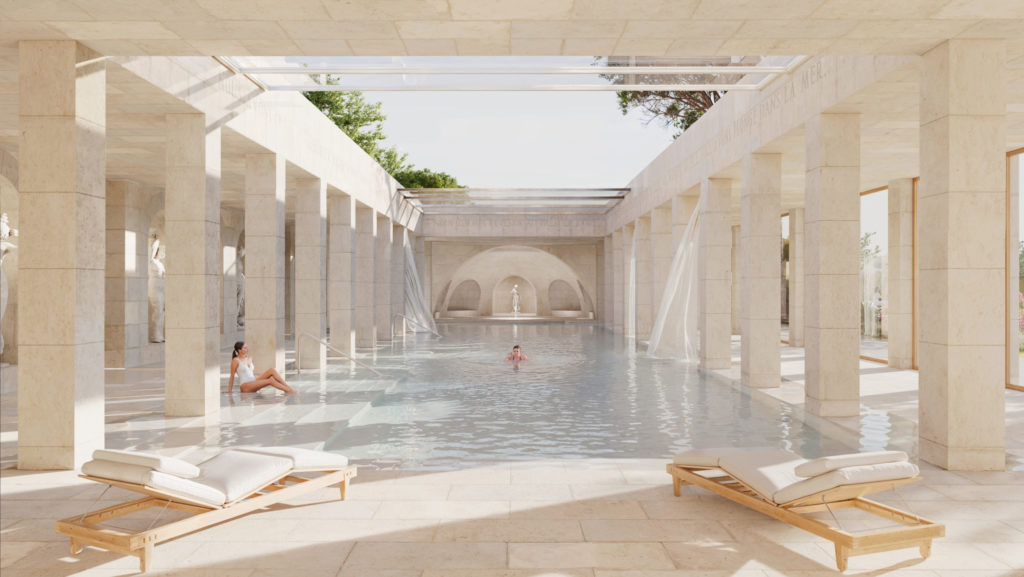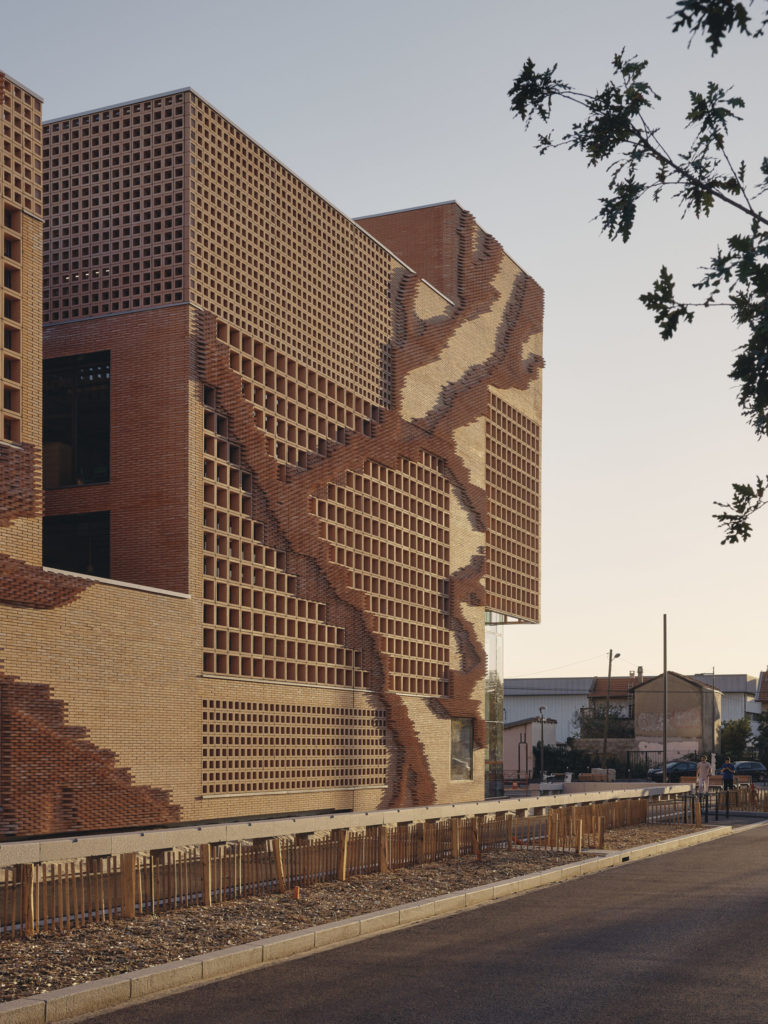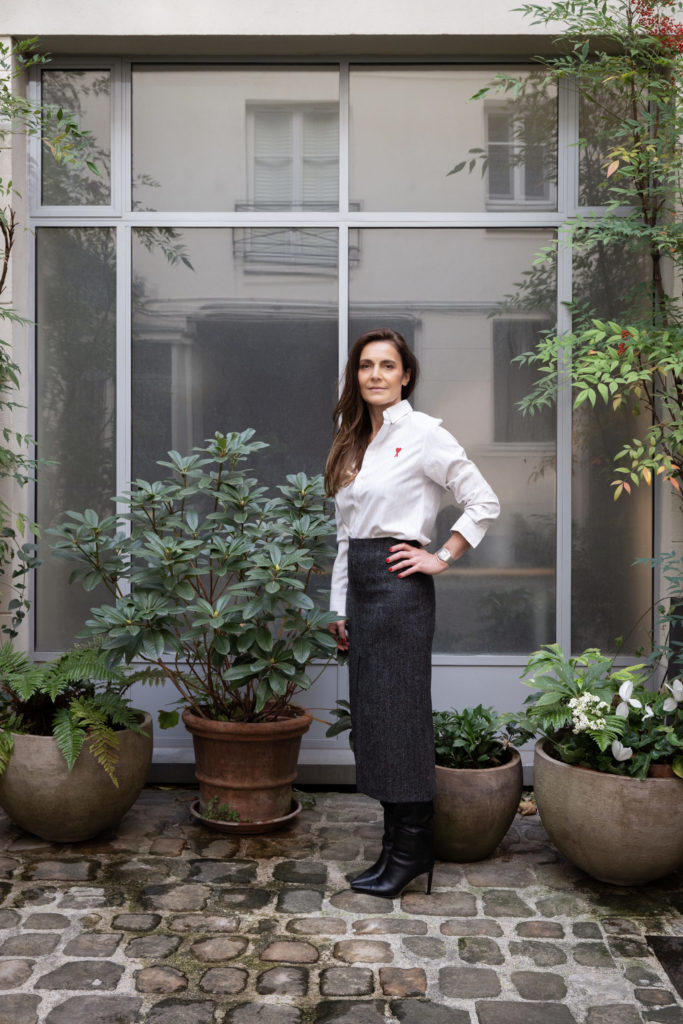An islander at heart, Amelia Tavella settled on Île Saint-Louis in Paris last September. The Corsican architect is starting a new chapter in the French capital. Back from Brazil, where she gave a lecture, she welcomed us to the loft where she has set up her architecture practice.
Born in Corsica, she developed a strong connection to nature from an early age, exploring it freely. Surrounded by strong women including her mother, and two brothers, her childhood in the heart of the maquis gave her strength, independence and a certain boldness that still drive her daring choices today. Fearless, she transposes her ambitious vision into her architectural work which is impressive, yet always imbued with softness and poetry. Driven by the conviction that nothing is impossible for women, she reminds us that we must dare to move forward, to step outside our comfort zone, as she did when she moved to Paris. This change of scenery broadens her horizons and perspectives.
With a personal approach to architecture that enables her to explore different layers of knowledge and history – reminiscent of practices at the crossroads of archaeology and human psychology – Amelia Tavella prefers to reconstruct rather than build, to repair and breathe new life, drawing on what already exists, whether it be a building itself or the memory of a place. She conducts detailed research and immerses herself in the site in order to understand its environment and context. She surrounds herself with experts from various fields and engages in artistic collaborations in order to refine her architectural response. With these fruitful reflections and her innovative practices, she proposes relevant projects that offer contemporary solutions while highlighting a rich past.
As a true theatre of life, buildings evolve and endure beyond generations. Being an architect means being a conduit. That is why she focuses primarily on projects of general interest that benefit society and have a strong cultural connection. She makes a point to ensure consistency between the construction and its context, as in the case of the A Strega school in southern Corsica, which blends harmoniously into the surrounding maquis, or the exceptional Rebirth of the Convent Saint-François in Corsica, which earned a place as a finalist for the prestigious Mies Van der Rohe Award in 2024.

Paying tribute to an existing place and its history, Amelia Tavella invests each project with passion and devotion, showing an almost maternal attachment to it. This total commitment transcends her achievements. Approaching architecture as a collective work, she enriches her creative process by combining disciplines and integrating the perspectives of other artists through unique collaborations. She likes to emphasise the power of collaboration between women.
Associating tradition and modernity, strength and softness, audacity and sobriety, the architect works on the materiality and purity of the gesture until she achieves a form of obviousness. For each building, she imagines a protective envelope, combining sober lines and craftsmanship excellence. While the Convent Saint-François is dressed in copper, the façade of the Simone Veil school bears the marks of passing time. Created in collaboration with visual artist Pauline Guerrier, this bas-relief in bricks forms a dynamic “skin” that comes to life with the solar cycle and its shifting shadows.
Amelia Tavella also fosters a meaningful dialogue between architecture and literature, with writer Nina Bouraoui, notably on the O’balia Thermal Spa project which will open in 2026. This collaboration has enriched the overall concept since the project’s inception. In an architectural work inspired by the site’s ancient past, Nina Bouraoui’s words are inscribed in the building’s materiality. As in Roman temples, the writer’s sentences are carved into the stone enhancing the structural elements.
« Cette architecture est libre et scellée à son lieu, elle invente en poursuivant, elle dit ce qui était devenu silencieux, redresse les lignes horizontales et effacées, saluant les dieux et déesses d’antan. L’eau guérisseuse devient signe, matériau, reine du royaume, elle tombe du ciel et trace un chemin. »
Excerpt in French of « L’eau, notre premier royaume » by Nina Bouraoui.

The collaboration between the architect and the writer began during the architectural competition for Château de Nalys. Celebrating the essence of this project situated in the heart of the Maison Guigal vineyard in Châteauneuf-du-Pape, Nina Bouraoui’s poem “Chère Nature” echoes the land, its surroundings and the family history. This poetic note and the softness of the vaulted interior contrast with the imposing mineral façade.

With numerous architectural projects and her participation in conferences around the world, Amelia Tavella leads a busy and exciting life. She draws new inspiration from her travels, but it is in the quietness of the church in her new Parisian neighbourhood that she recharges her batteries. « Beauty uplifts and nourishes us,” she confides.



This series is created in collaboration with photographer Jelena Barraud, founder of Wings & Creativity.
Geraldine Morand
Jelena Barraud
via Amelia Tavella: Thibaut Dini, Epaillard Machado
via Amelia Tavella: we are contents
